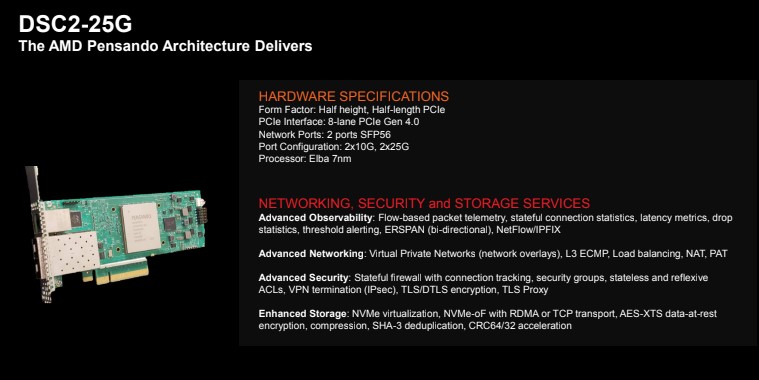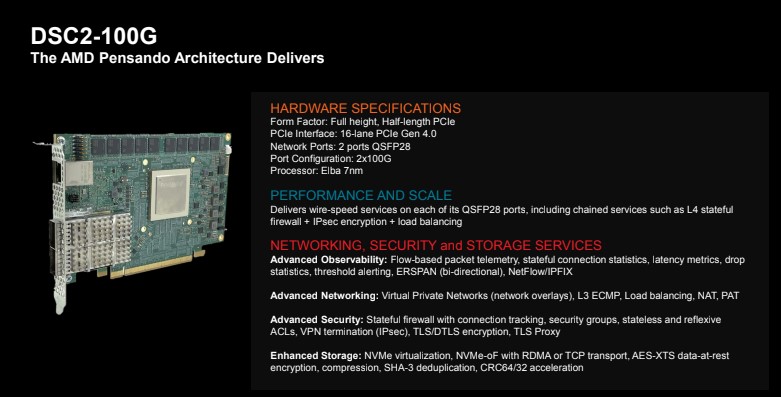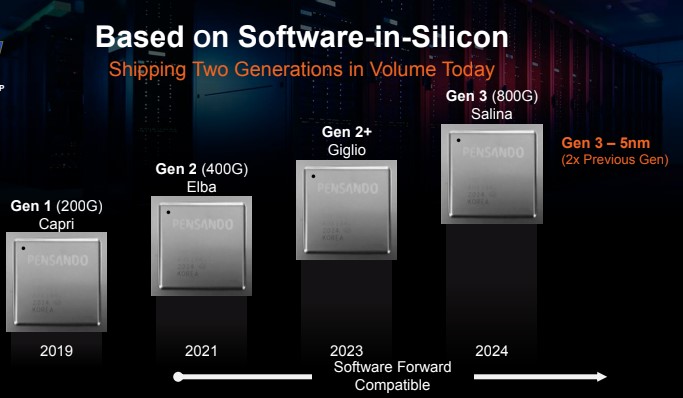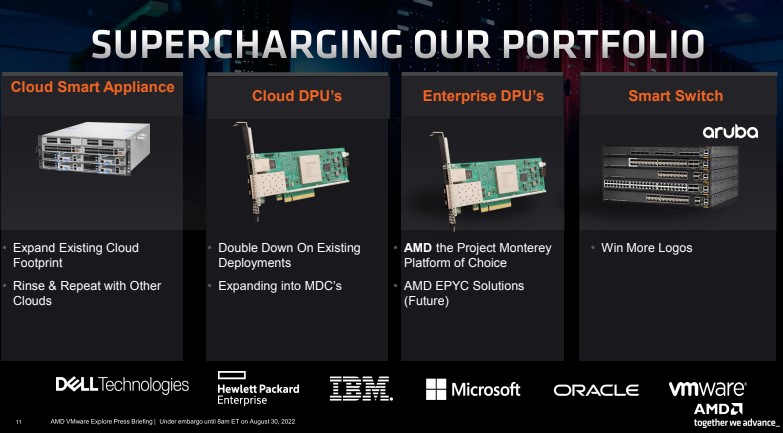SANTA CLARA, Calif.
04/04/2022
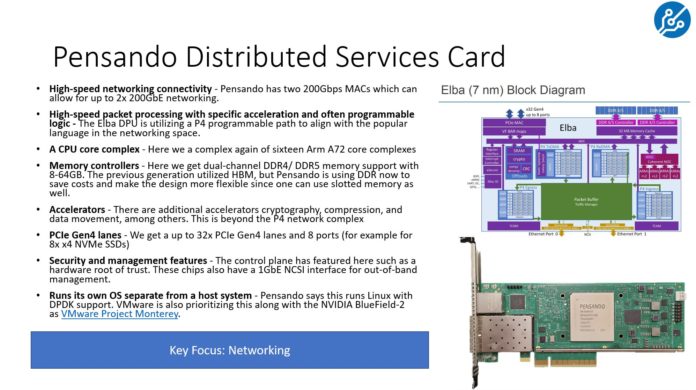
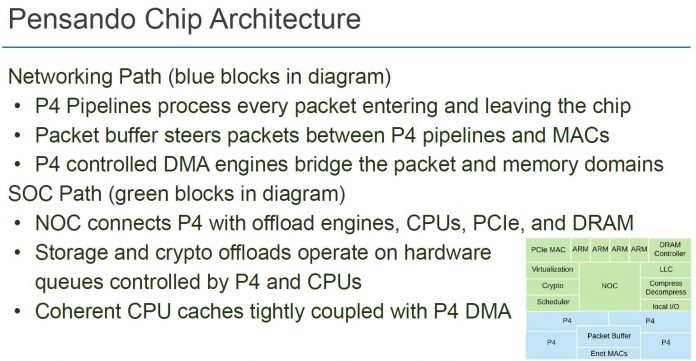
https://www.servethehome.com/amd-ac...ipu-nvidia-bluefield-marvell-octeon-fungible/
04/04/2022
AMD (NASDAQ: AMD) today announced a definitive agreement to acquire Pensando for approximately $1.9 billion before working capital and other adjustments. Pensando’s distributed services platform includes a high-performance, fully programmable packet processor and comprehensive software stack that accelerate networking, security, storage and other services for cloud, enterprise and edge applications.
“To build a leading-edge data center with the best performance, security, flexibility and lowest total cost of ownership requires a wide range of compute engines,” said Dr. Lisa Su, AMD chair and CEO. “All major cloud and OEM customers have adopted EPYC processors to power their data center offerings. Today, with our acquisition of Pensando, we add a leading distributed services platform to our high-performance CPU, GPU, FPGA and adaptive SoC portfolio. The Pensando team brings world-class expertise and a proven track record of innovation at the chip, software and platform level which expands our ability to offer leadership solutions for our cloud, enterprise and edge customers.”
“We are excited to join the AMD family. Our shared cultures of innovation, excellence and relentless focus on partners and customers make this an ideal combination. Together, we have the talent and tools to deliver on our customers’ vision for the future of computing,” said Pensando CEO Prem Jain. “In less than five years Pensando has assembled a best-in-class engineering team that are experts in building systems together with a rich, deep ecosystem of partners and customers who have currently deployed over 100,000 Pensando platforms into production. Joining together with AMD will help accelerate growth in our core business and enable us to pursue a much larger customer base across more markets.”
https://www.amd.com/en/press-releas...r-solutions-capabilities-acquisition-pensandoCEO Prem Jain and the Pensando team will join AMD as part of the Data Center Solutions Group, led by AMD Senior Vice President and General Manager Forrest Norrod. Pensando will remain focused on executing their product and technology roadmaps, now with additional scale to accelerate their business and address growing market opportunities across a broader number of customers.
The acquisition is expected to close in the second quarter of 2022, following satisfaction of customary closing conditions including approval under the Hart-Scott-Rodino Antitrust Improvements Act of 1976.
AMD Acquires Pensando for its DPU Future
What is Pensando?
Pensando’s physical products are called its “Distributed Services Card”. This card basically marries a high-speed network interface, with a P4 programmable pipeline engine, an Arm CPU complex, memory controllers, accelerators for cryptography, storage, and more, and also PCIe Gen4. All of these features go onto a PCIe card.

The key here is that the way Pensando’s solution works is by managing traffic more similarly to how it would be managed in a switch in a P4 pipeline. Customers or software providers can utilize the pipeline and then build additional acceleration on certain parts of the pipeline.

While some may see Arm cores and immediately compare them to Intel Mount Evans, NVIDIA BlueField-2 (and newer) DPUs, Marvell Octeon 10 DPUs, in Pensando’s architecture, the main point is the P4 pipeline, not the Arm cores. If P4 sounds familiar in the DPU world, Intel has a number of IPUs, and the Mt. Evans product that is really focused on Google’s cloud at the moment features a P4-based toolchain.
Pensando has been investing in a software stack and APIs to basically re-create a lot of what Nitro does for AWS. Pensando then lets customers choose what it wants to use. For example, NetApp ships some systems with Pensando DPUs, and those systems are using the cards just for the accelerator offloads and networking.
Why AMD is Buying Pensando
The next question is, why Pensando, not someone else? To me, there are basically two DPU startups left that seem to have some scale that it would make sense for AMD. Pensando is one, Fungible is the other. While Pensando is using P4 and Arm to build something “AWS Nitro-like”, Fungible started with a storage product.
Xilinx is for certain classes of devices and IP blocks (think chiplets with UCIe) for the data center and the embedded market. AMD needs AI acceleration hardware as it is trailing NVIDIA and Intel in that category. It also needed a DPU to bolster networking since Intel and NVIDIA are both actively pushing that line. Xilinx perhaps could have been the answer, but in the end, it was faster to purchase Pensando and de-risk getting a product by buying the best available independent DPU maker out there.
The AMD-Xilinx deal taking so long probably made it so that the Xilinx/ SolarFlare IP was probably not going to be the right option, and so AMD needed a solution and Pensando is the company that probably had the best fit.
https://www.servethehome.com/amd-ac...ipu-nvidia-bluefield-marvell-octeon-fungible/



 ).
).